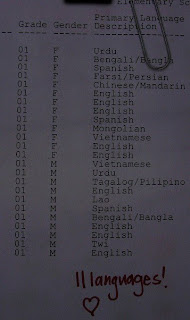
This marks my last post in November. As of right now, I've done it. 30 posts in 30 days. Holy pajamas.
I took on this challenge to get myself more in the habit of blogging daily and I'm so glad I did. I started thinking more in terms of writing. I don't think I would have necessarily made so many connections between my daily life and its impact on teaching had I not had the underlying knowledge that I would be writing every day. I really appreciated the chance to get myself thinking about writing and sharing and audience every day.
On the other hand, I didn't accomplish one of the things I thought I would, namely, finishing some of the half written reflections that are lingering on my computer.
Over the past few years, I've discovered that I am a slow writer. I think part of that might be because often I write to reflect on something. If I haven't yet gotten "there" with a thought or an idea, then the writing stays unfinished until I do.
Similarly with this blog. There are very specific teaching or education subjects about which I've been ruminating for weeks or months now (curriculum requirements, teacher expectations, government involvement, inequity) and haven't made their way here into my blog because they're not yet finished thoughts.
In taking on this challenge, I expected that I would somehow complete everything in my finish this folder. Silly me. In my writing life, nothing is ever finished until it's ready to be, so I should have expected the same.
I do expect to finish them one day, but this has proved to me that even a commitment to daily blogging won't make me write something that isn't yet ready to be written. Interesting to undertake different experiences to learn more about myself, though, I must say.
To those of you that have followed this November journey, thank you so much for doing so. It's been interesting to meet some new people during the month and I'm looking forward to continued connections.
See you all in December! (um. decidedly less often, though.) ♥




























